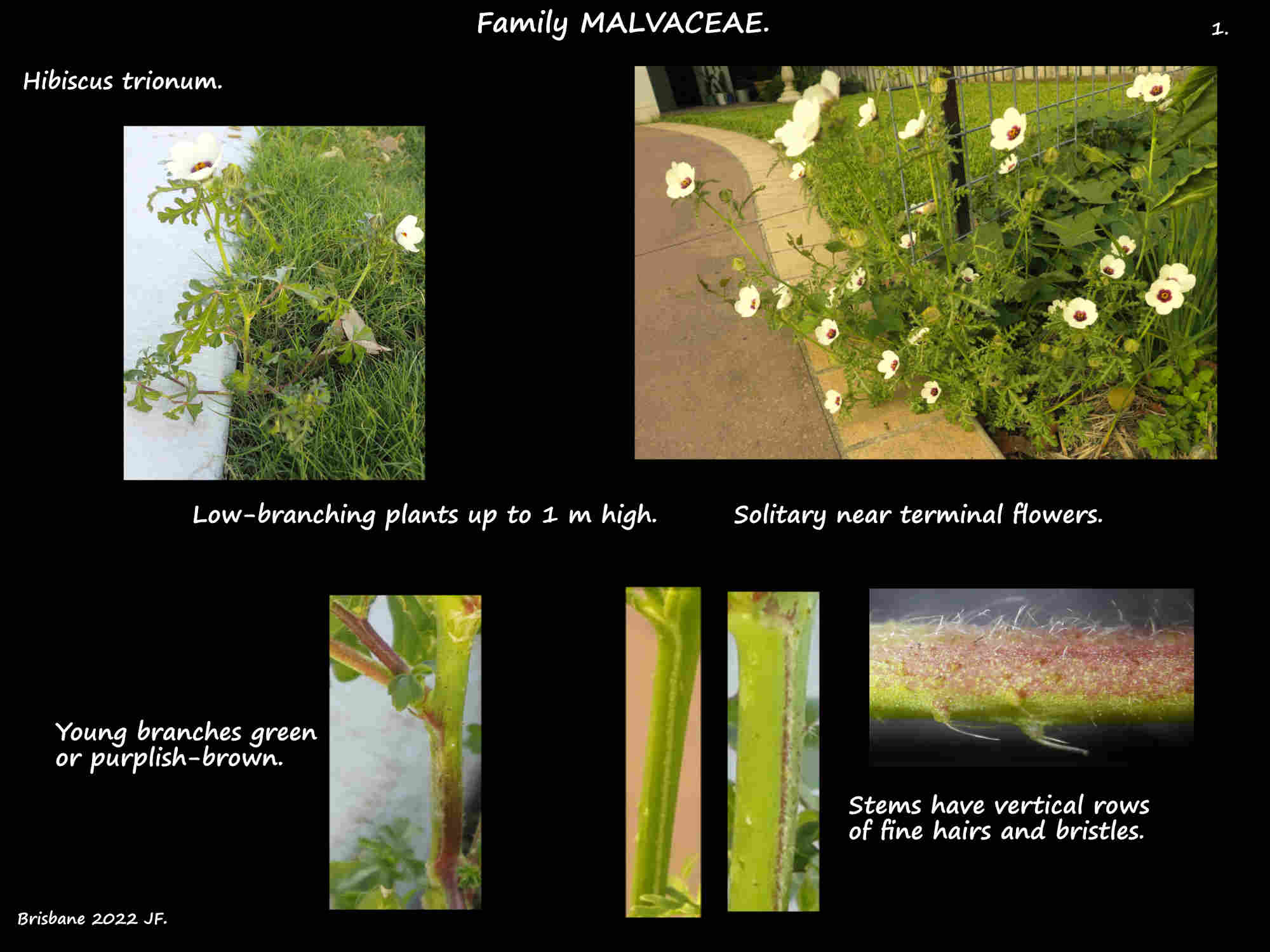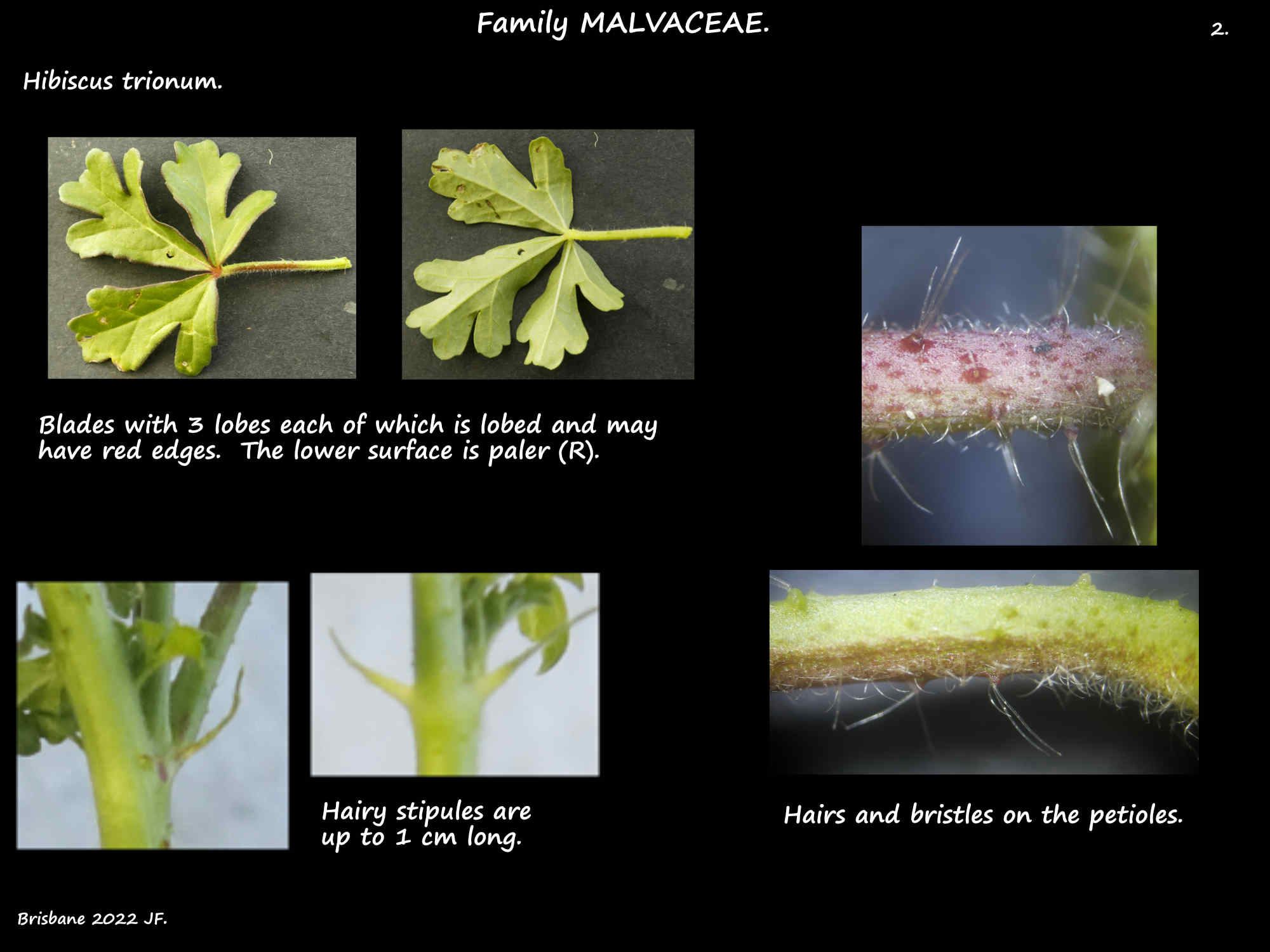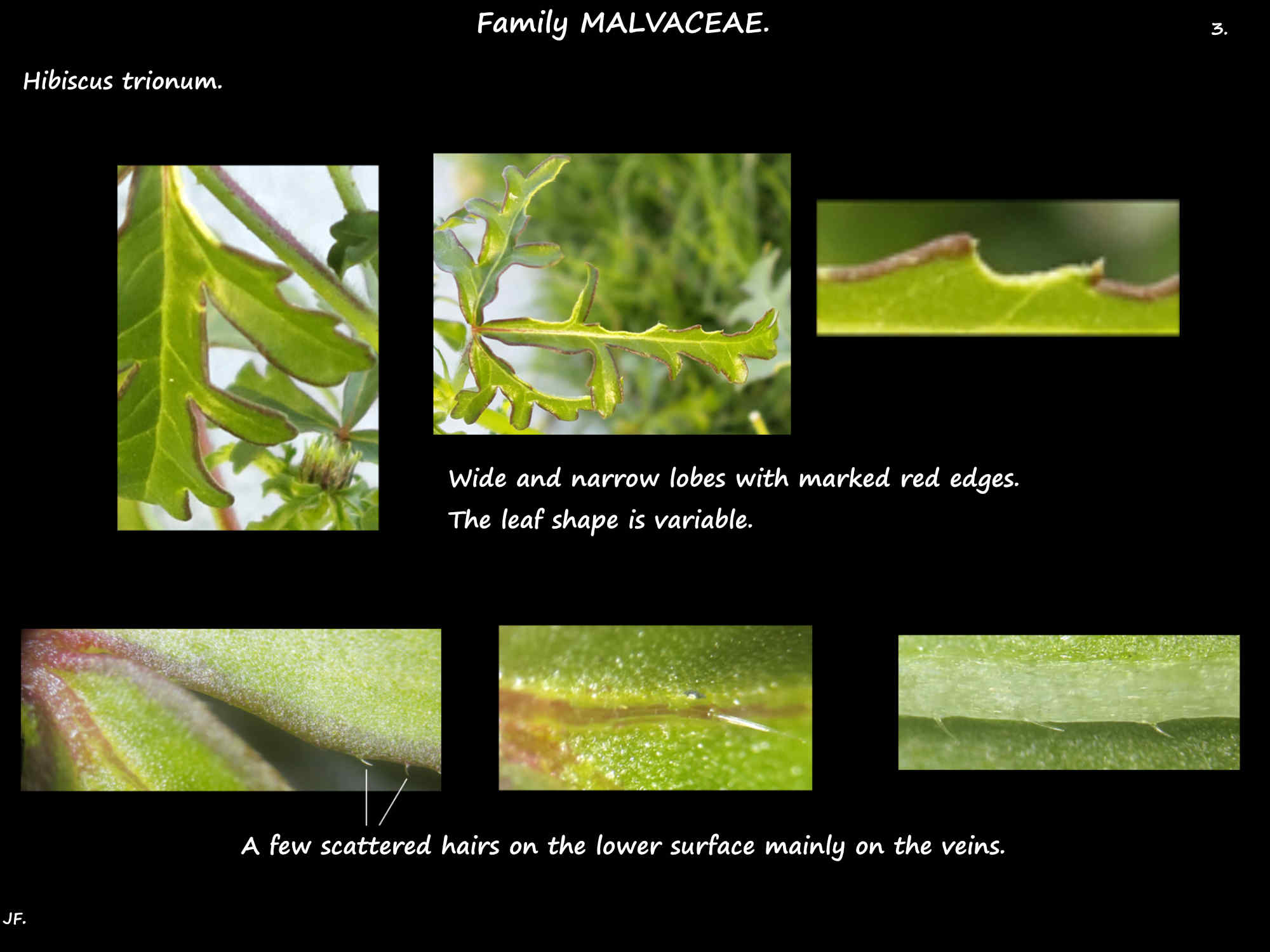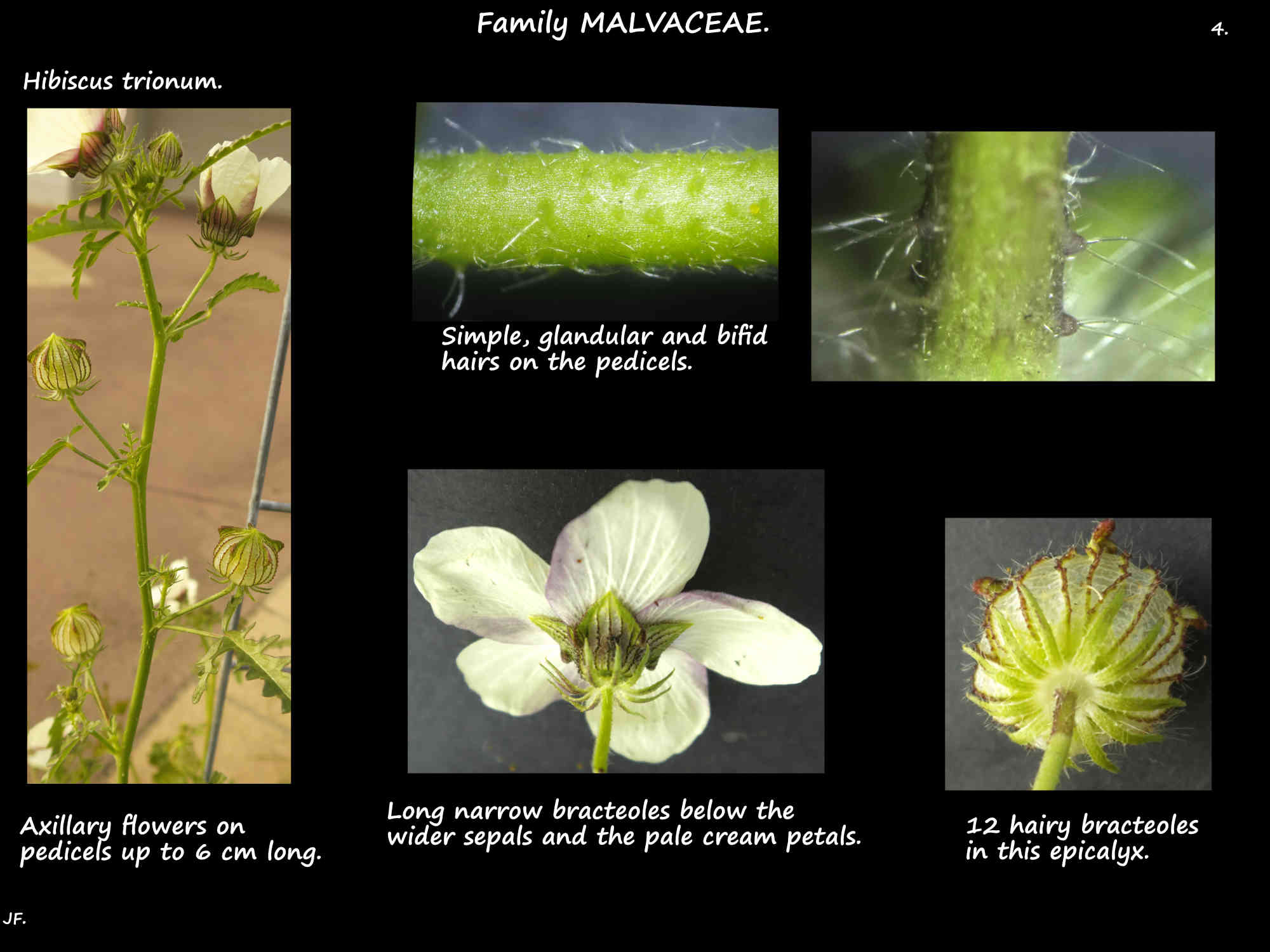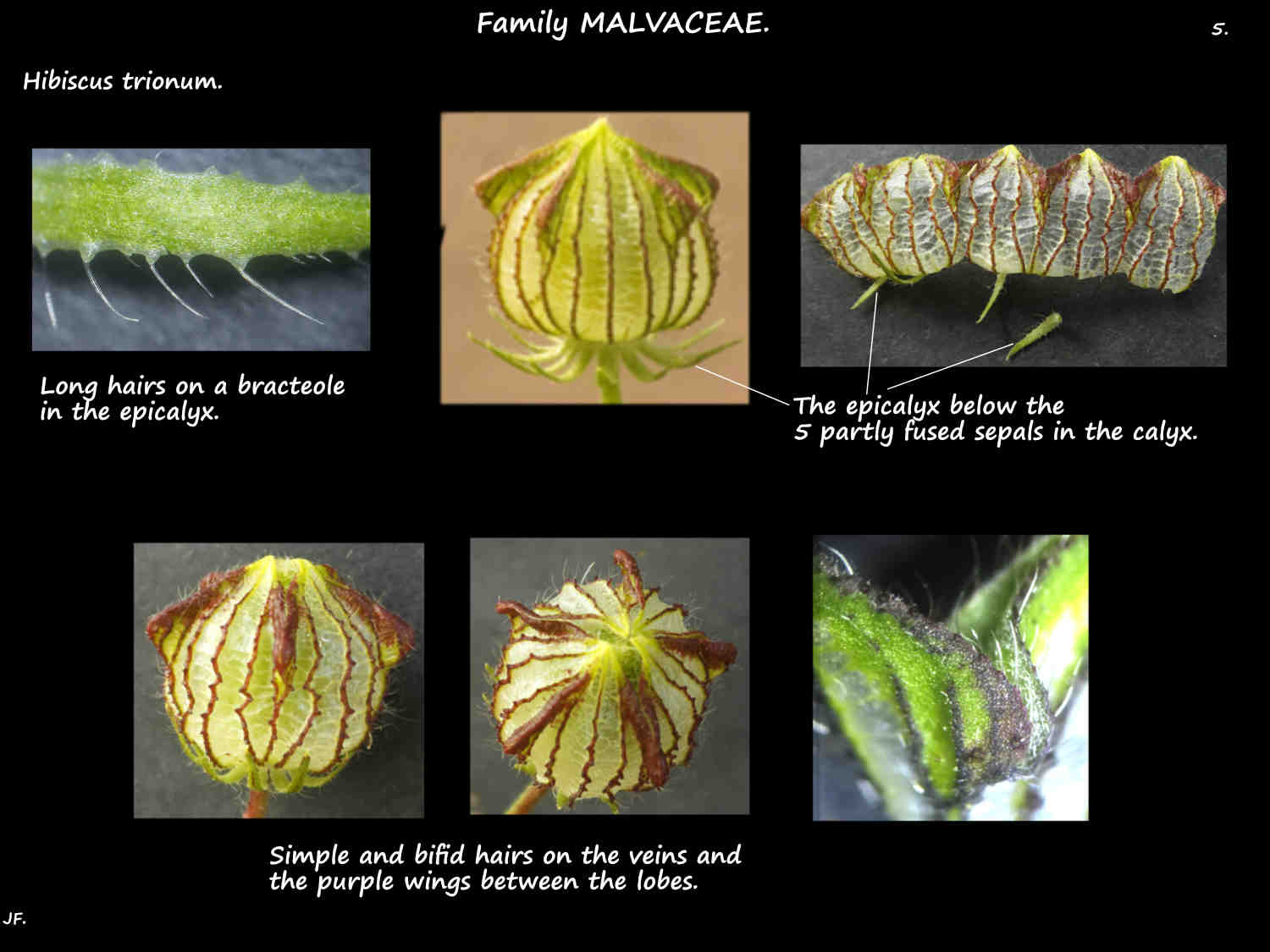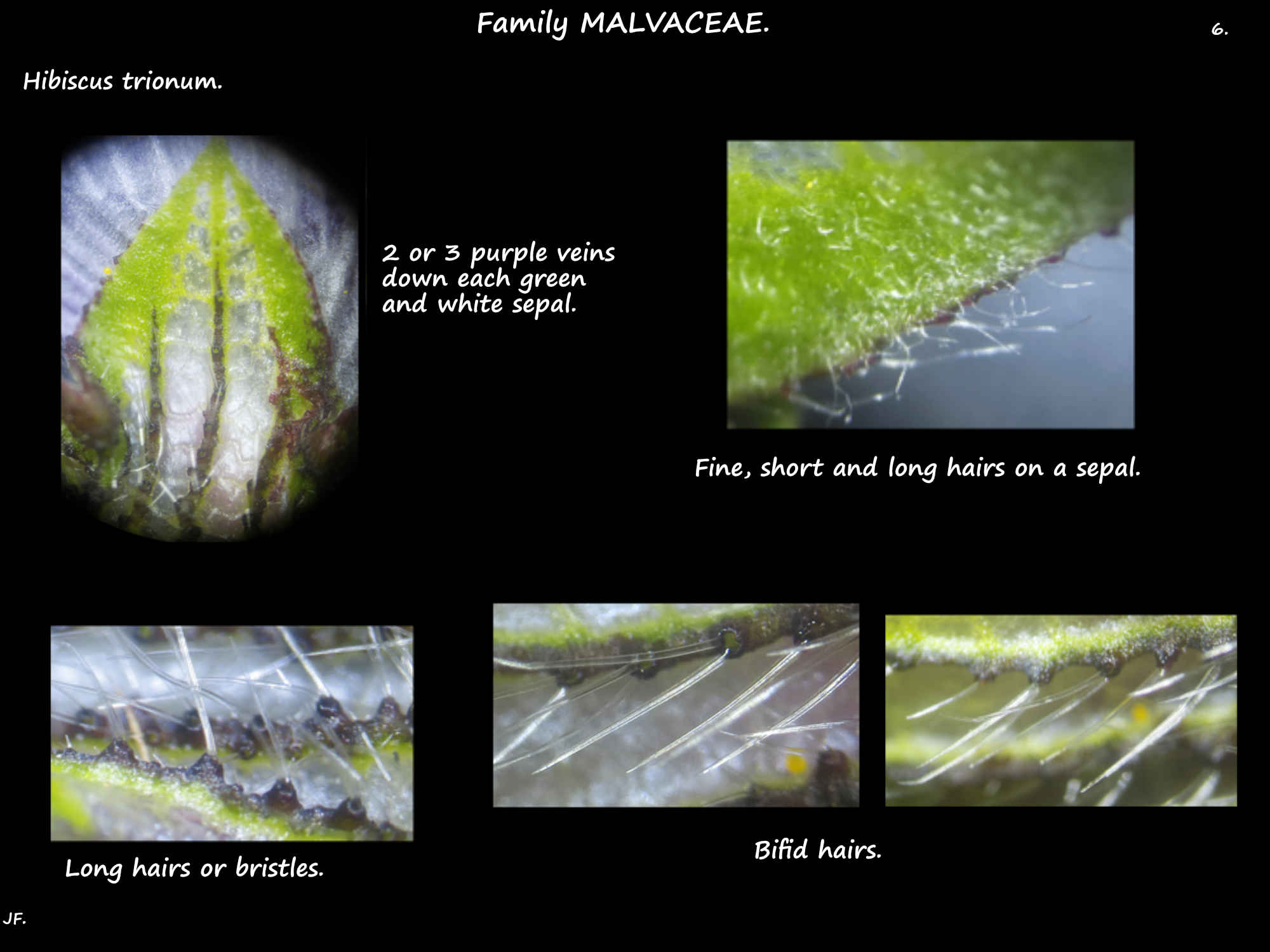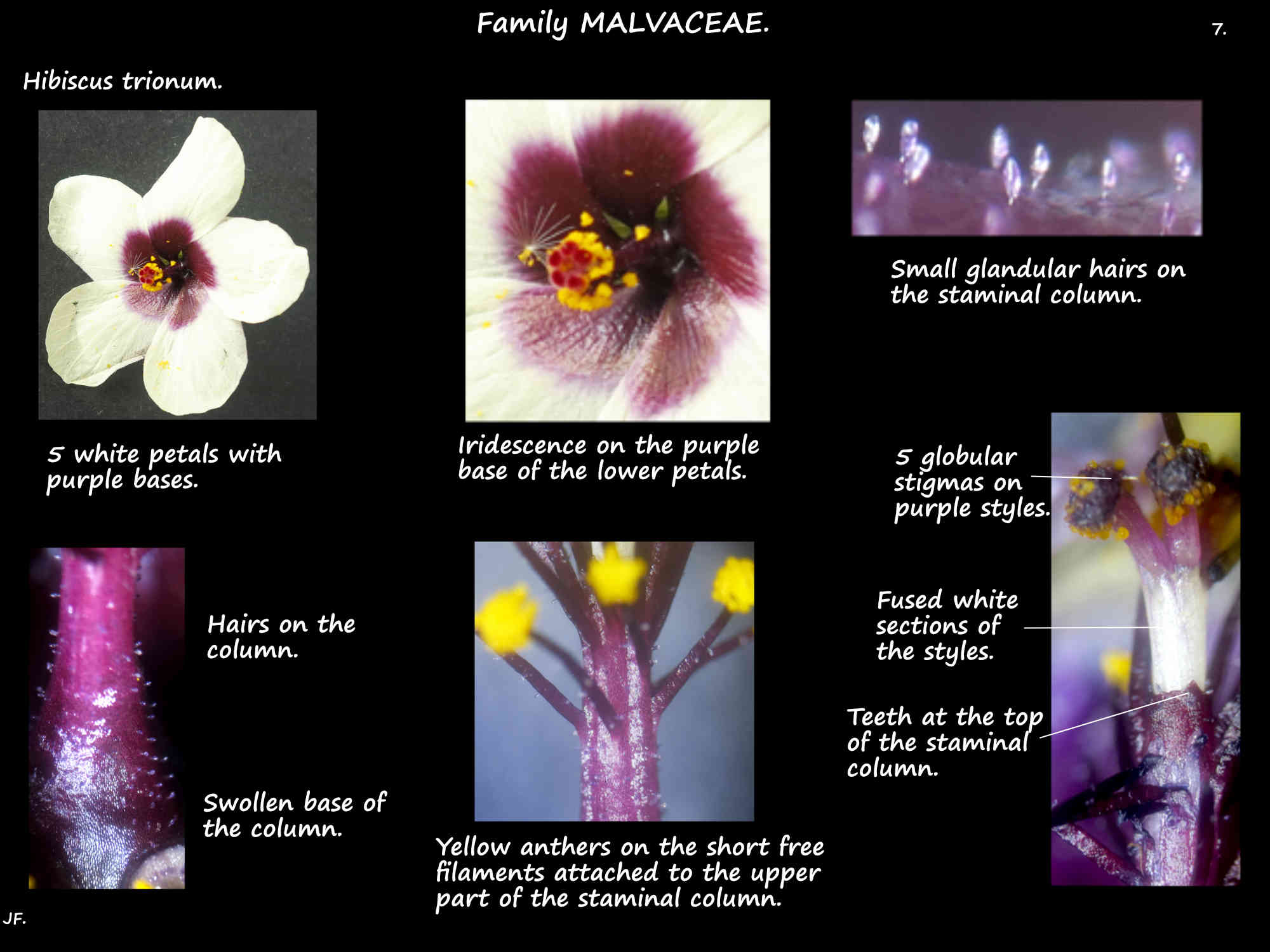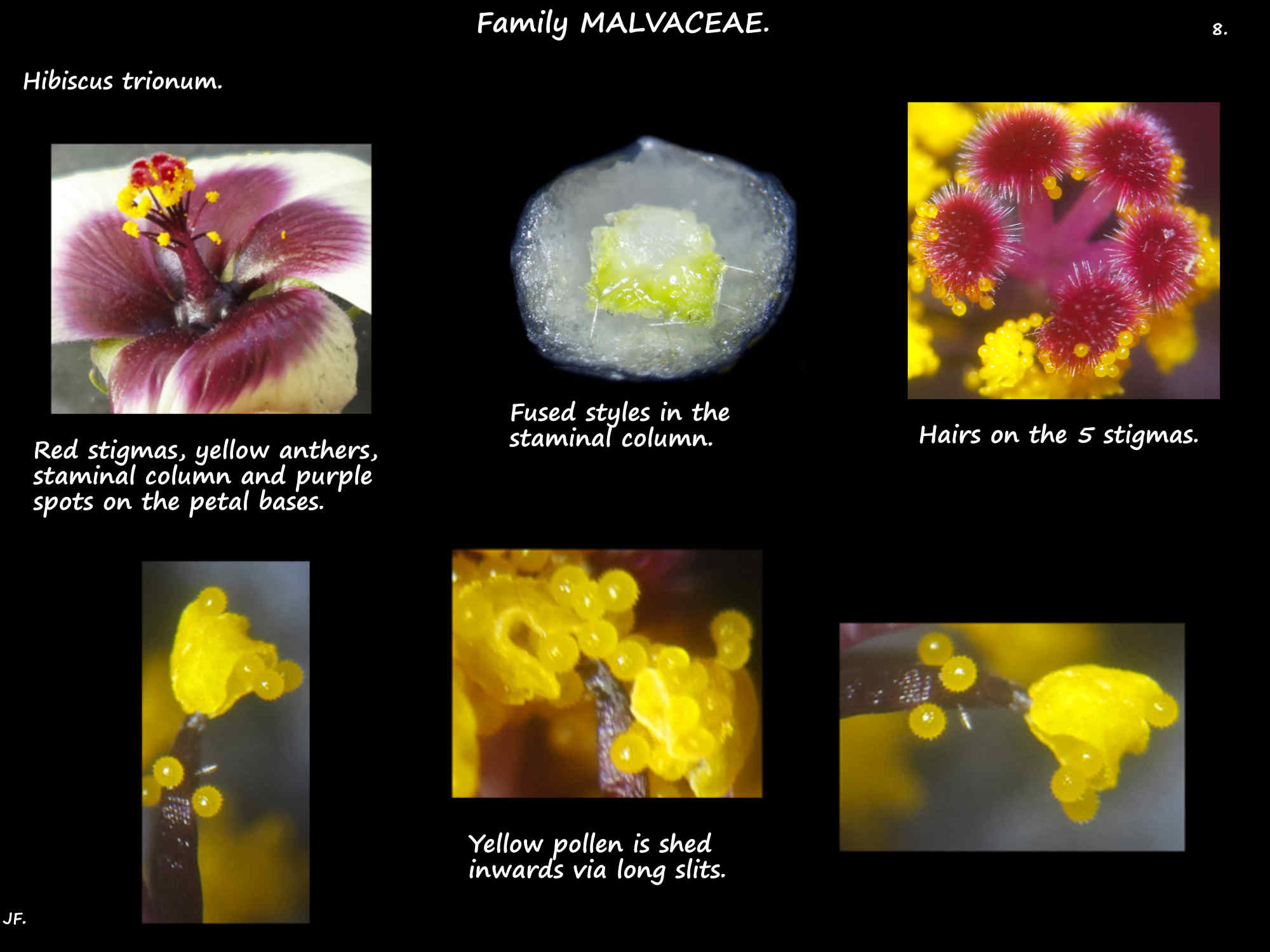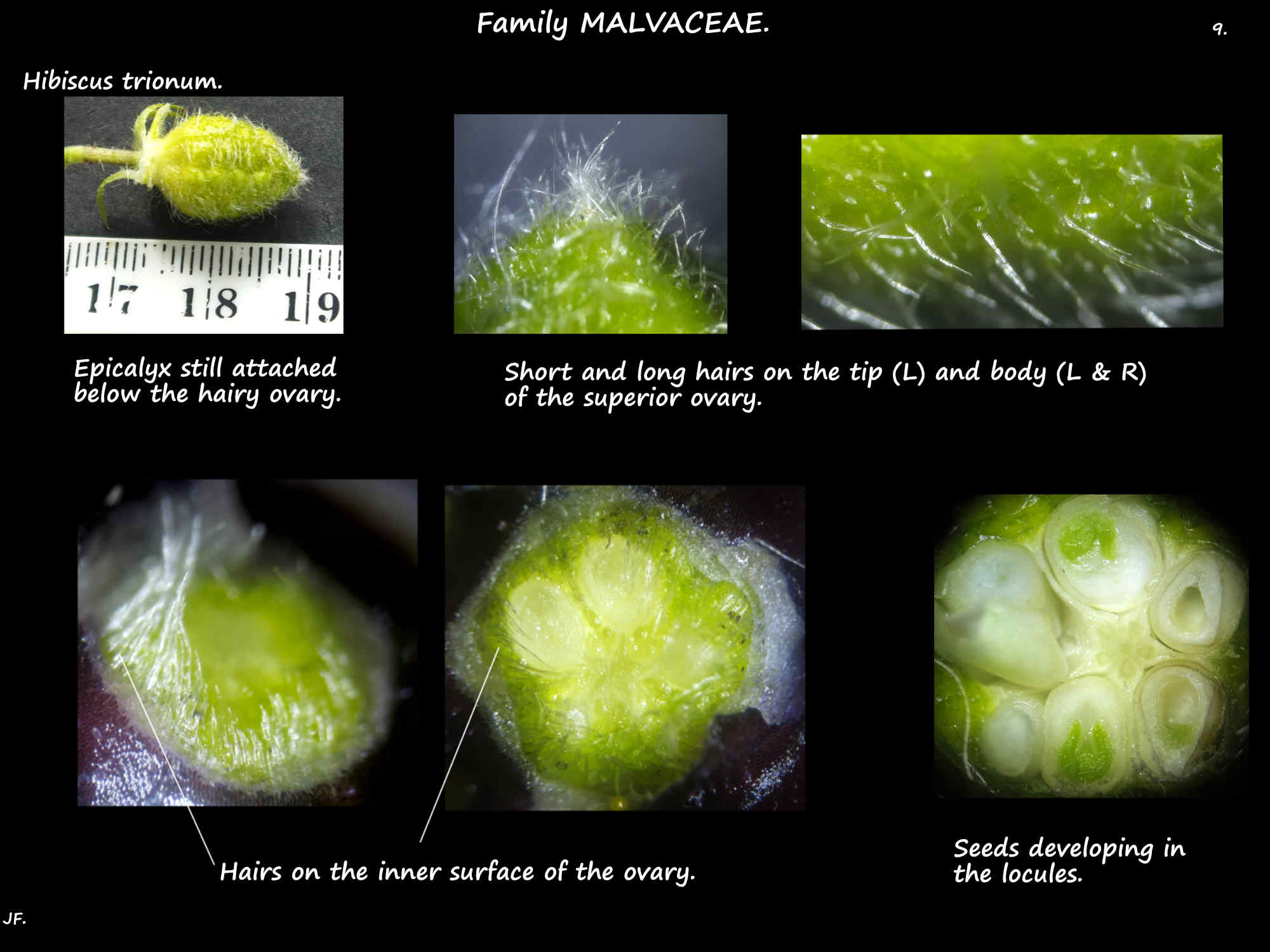Hibiscus trionum.
Flower-of-an-Hour or Rose Mallow is present in all states as a cultivated plant and sometimes a weed.
It is an annual herb often around 50 cm high but occasionally up to 1 m or more.
It has a taproot with fibrous roots near the top.
Many erect or sprawling stems branch off near the base.
Young stems are green then may be brownish or purple while older stems are woody.
The circular, striated stems have vertical rows of fine hairs lying flat along the surface.
There are also fine and coarse stellate hairs and bristles up to 1 mm long.
Young stems have dense hairs and older stems may have a few or none.
The alternate leaves are on petioles around 4 (3 to 5) cm long.
The hairs on them are similar to those on the stems.
The linear stipules, up to nearly 1 cm long are also hairy.
The round to ovate blades are up to 7.5 cm long by 5 cm wide.
They are palmately divided into 3 (5 to 7) lobes with rounded tips.
The middle lobe is the longest and all three are slightly to deeply lobed.
The edges may be toothed and they are often red.
The shape of the blade is very variable and the lower leaves may not be divided at all.
There are translucent glands and a few scattered hairs mainly on the veins on the lower surface.
The hairs can be simple, bifid or stellate.
The axillary inflorescences are 1 to 3 solitary flowers near the end of a stem.
The pedicels, up to around 4 cm long have fine and coarse stellate hairs and sometimes bristles.
There is an epicalyx of 10 (8 to 12) slender bracteoles up to around 1 cm long.
The edges have coarse teeth and there are a few long simple hairs.
The radially symmetric, bisexual flowers are around 4 (3 to 6) cm across.
The 1.5 cm long calyx has 5 partially fused sepals with the ovate to triangular lobes being longer than the tube.
The outward projecting edges of adjacent lobes form 5 elevated purplish wings down the calyx.
The rest of the membranous calyx is white or pale green with 3 or 4 raised purple veins running down each sepal.
There may be bristles and stellate hairs with out without glands or no hairs at all.
There are 5 free ovate to obovate petals 3 to 4 cm long and 2.5 to 3 cm wide.
Mostly white or a pale yellow they can also be cream or pale pink.
The base of the petals is a dark maroon to purple.
Each flower only opens for a few hours and they last 1 or 2 days.
The dark maroon or purple spot at the base of the petals is iridescent and this can be seen in daylight.
The epidermal cells in this area have a thick cuticle (waxy layer) and the striations in its surface form a
diffraction grating that causes the iridescence.
The white area of the petals has a smooth epidermal surface and is not iridescent.
The iridescence may attract bees.
There are numerous stamens with dark maroon or purple filaments and yellow anthers.
The bright yellow anthers have yellow pollen which is shed as individual grains.
The filament bases are fused to form a hollow staminal column up to 1.5 cm long.
The 1 to 2 mm long free ends of the filaments are attached to the upper 6 mm or so of the column.
Thee swollen base of the column forms a deep maroon mound between the petals and the ovary.
The hairy superior ovary has 5 locules.
The bases of the 5 white styles are fused and most of this section lies in the staminal column.
The short section above the column branches into 5 purple arms each with a 1 mm globular stigma.
The stigmas, covered in tiny hairs are held up to 1 cm above the perianth.
The fruit are ovoid to globular loculicidal capsules up to 2.5 cm long when ripe.
They are surrounded by the inflated papery calyx.
The 5 chambers hold numerous flattened dark brown to black, oval to kidney-shaped seeds.
The seed surface is rough due to ridges and tiny warts.
If a flower is not fertilised within a few hours of it being mature it self-fertilises by bending the style down to touch the anthers.
J.F.
